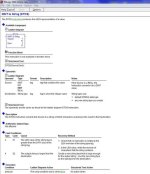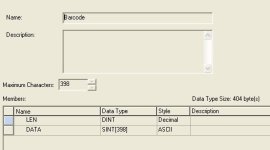I use CompactLogix L32E and bar-code scanner.
The read data of scanner is mapped to array of DINT.
The read data almost ASCII, so I want to use ASCII instruction.
Please teach me how to convert the array of DINT to STRING data type.
for exanple...
data is DINT[100]
data_string is STRING
Is there easy way to convert data to data_string.
The read data of scanner is mapped to array of DINT.
The read data almost ASCII, so I want to use ASCII instruction.
Please teach me how to convert the array of DINT to STRING data type.
for exanple...
data is DINT[100]
data_string is STRING
Is there easy way to convert data to data_string.











